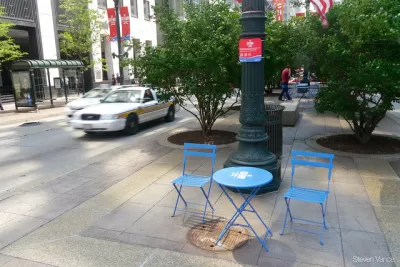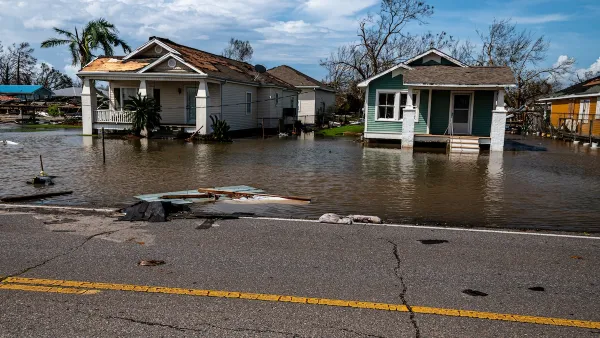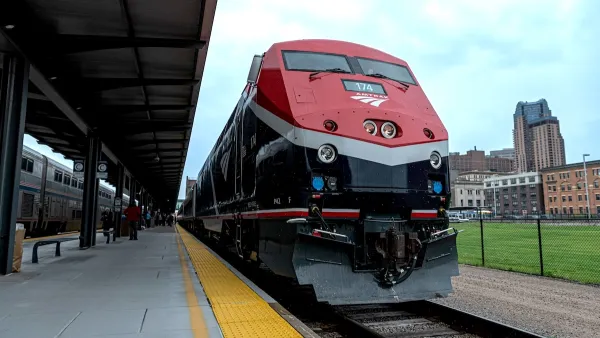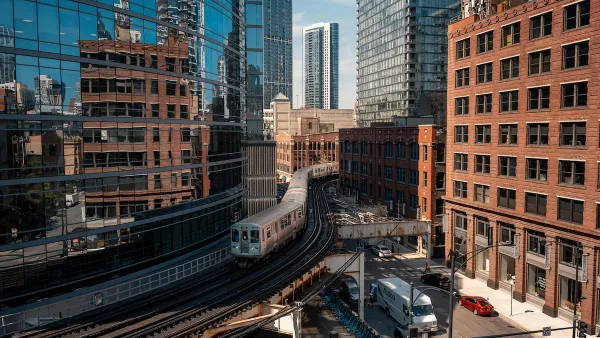Launched with neighborhood-friendly ambitions, Chicago's people plaza program was meant to create revenue-generating gathering places. A Chicago Tribune editorial says it's hard to find any people at the plazas, however.

The Chicago Tribune's editorial board revisits the "people plazas" ideas put forward by Mayor Rahm Emanuel as a way to reinvigorate vacant city-owned lots. The ideas as to create live music venues and art exhibits, and offer a place to "gather, mingle, shop at pop-up stores, dance even" in residential neighborhoods.
The editorial board offers a blunt assessment of the people plazas program, however: "Almost two years later, there's something missing from the people plazas. People." The editorial provides more background on how the program was meant to launch and operate:
The program was supposed to transform 49 pieces of vacant or underused city-owned land into gathering places "that reflect the unique and dynamic cultures of the various neighborhoods," according to the city's bidding documents. The hope was that the plazas would eventually become self-sustaining — companies would be permitted to advertise at the plazas, as well as sell food or merchandise. The city would get a 10 percent cut of the net profits, and the company hired to make the people plaza project happen, Latent Design, would get the rest.
The Tribune has found no evidence that the program has achieved even middling success. So far the city has spent $164,000 on the program while raising only $8,000 in revenue. The editorial thus suggests that both the Mayor's Office and the alderman with people plazas in their districts apply more pressure for results.
[Ed's note: the Tribune says the people plaza program was launched in 2015, but we see evidence of the term dating back to 2013.]
FULL STORY: Chicago's unpopulated 'people plazas'

Planetizen Federal Action Tracker
A weekly monitor of how Trump’s orders and actions are impacting planners and planning in America.

Vehicle-related Deaths Drop 29% in Richmond, VA
The seventh year of the city's Vision Zero strategy also cut the number of people killed in alcohol-related crashes by half.

As Trump Phases Out FEMA, Is It Time to Flee the Floodplains?
With less federal funding available for disaster relief efforts, the need to relocate at-risk communities is more urgent than ever.

Berkeley Approves ‘Middle Housing’ Ordinance
The city that invented single-family zoning is finally reckoning with its history of exclusion.

SEPTA Budget Slashes Service by 45 Percent
The Philadelphia-area transit agency is legally tasked with maintaining a balanced budget. Officials hope the state will come to the rescue with additional funding.

Connecticut Governor Vetoes Housing Bill
Gov. Lamont reversed his view on a controversial affordable housing bill that would have required municipalities to zone for set amounts of affordable housing to receive state funding.
Urban Design for Planners 1: Software Tools
This six-course series explores essential urban design concepts using open source software and equips planners with the tools they need to participate fully in the urban design process.
Planning for Universal Design
Learn the tools for implementing Universal Design in planning regulations.
Heyer Gruel & Associates PA
JM Goldson LLC
Custer County Colorado
City of Camden Redevelopment Agency
City of Astoria
Transportation Research & Education Center (TREC) at Portland State University
Camden Redevelopment Agency
City of Claremont
Municipality of Princeton (NJ)





























